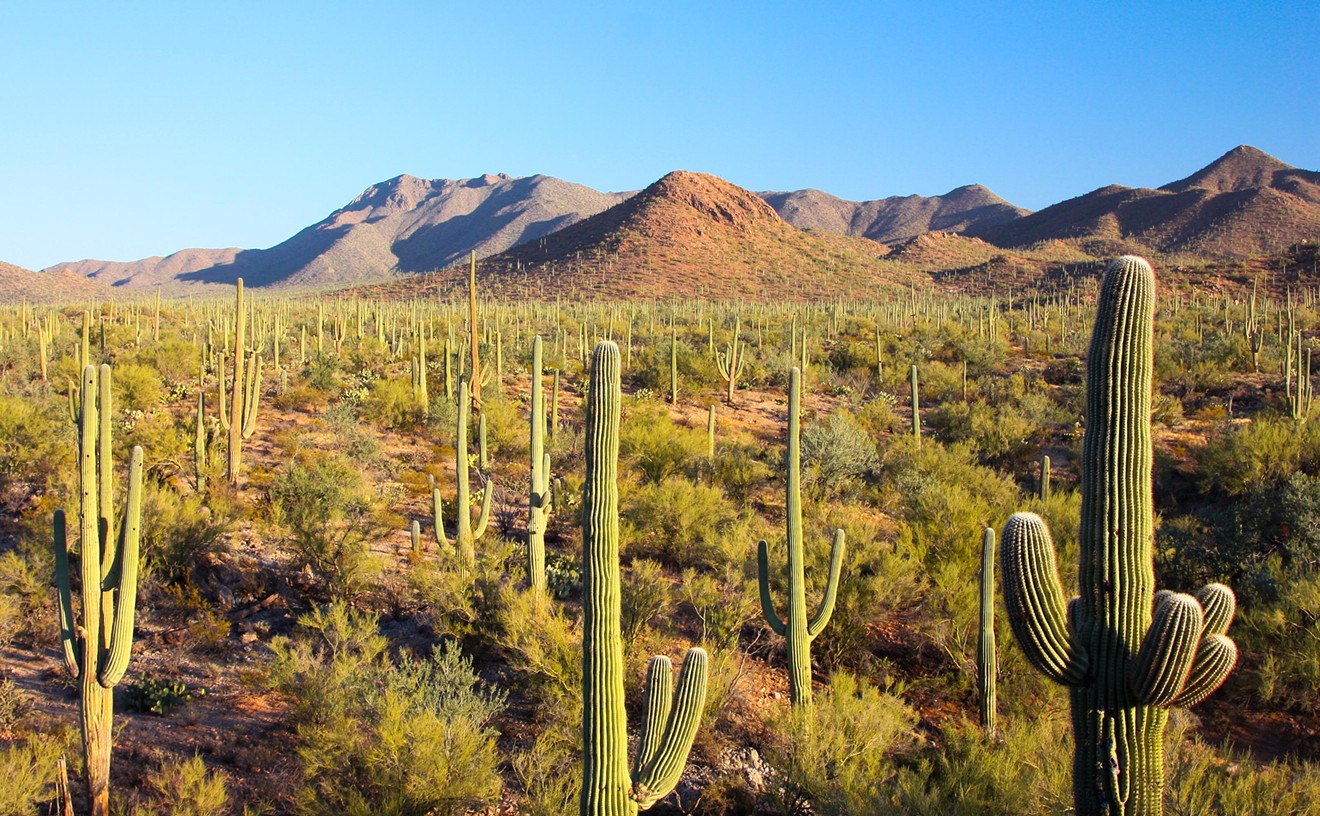While there, she often looked up toward the sky while walking surrounded by buildings that dominated the urban landscape. Hence, the name of her exhibit: “Maria Hupfield: Nine Years Towards the Sun.”
It’s the first exhibit in a series featuring works by women and women-identifying artists. The series will explore the impact of women on contemporary art, and the rich contributions being made by women artists.
Recently, Hupfield talked with Phoenix New Times about “Nine Years Towards the Sun,” which opened on December 6. Here’s a portion of that conversation, which also explores her larger body of work.

From Pigment to Pantone and Back Again (photographic mural and vinyl, 2010).
Craig Smith/Heard Museum
Historically, Native art has been associated with the past instead of contemporary artists. But the curator, Erin Joyce, has been working to showcase what indigenous artists are doing now. We decided to show my Brooklyn body of work, because I felt it could have an impact here. Especially in the Americas, people think all Native artists are in the Southwest. It’s a very limited way of thinking, and we wanted to counter that.
How does your experience of being a Native woman influence your art?
I’m all about showing work that’s innovative and progressive and showing the range and scope of Native people and artists, especially as a woman-identifying artist. I’m working to counter the limitations of race and gender, as well as people’s expectations. Native women are seen as interchangeable, but this exhibit pushes against that.
Tell us about the performative nature of your work.
My work is all about time and space because I’m dealing with the body. A performance is very specific to that location and moment. This exhibit is about a series of performances that have happened, are happening, and will happen. I’m interested in different ways you experience a story or performance, and how to remember something that has happened.
How does the gallery space reflect your approach?
I want people to see the objects in the exhibition as multidimensional, not static or fixed. The first level looks like a place where you could perform — with platforms, speakers, and armatures on casters. I make space for bodies so people know art comes from somewhere, it’s connected. Some of the objects are in Plexiglass cases with air vents to show a connection between the objects and the viewer. I want people to wonder. Does it need to breathe? Do we need to hear it? The second level is an archive of objects connected to past performances.
Why is gray felt so prevalent in your work?
I have a jingle dress made out of paper at the National Museum of the American Indian. Every jingle has the name of a Native poet. I wanted to return to the jingle, but I wanted to make a piece that would allow me to move. Skirts are so tied to gender, so I decided to make boots. I was doing a sound residency in Canada, and there was a museum doing backgrounds in felt. I repurposed the felt, which was a way of collapsing the binary between craft and high art.
What about the wood, and your use of yellow paint?
I like using raw, unfinished materials that aren’t so refined. The two-by-fours are something that everybody recognizes, but they’re often associated with men and construction. The wood looks very accessible, like you could just come up and use it. But the yellow makes these pieces feel a little uncomfortable, conveying danger and a cautionary power at the same time. Sometimes the wood stands in for the human body, as if I might return at any time to perform in the space.
Why is collaboration so central to your art practice?
Collaboration is a way to make something better and go beyond what we can do on our own. Arts is such a competitive field, and I’m moving against being artists being pitted against one another. It’s a way that femme, women-identifying, and nonbinary artists can create space on our own terms and support each other. Working together is also a way to enjoy friendships and kinship with other artists.
Tell us about the outdoor installation.
The benches are social sculptures. For me, it’s about claiming space. I created a space where people could sit with the trees instead of looking at the trees. I think of the trees as kin; they’re not there to entertain us. The image on the wall is me standing on a rooftop in Brooklyn, and I’m holding a painting my mother made of a bay where I grew up. Even though I’m in a very urban environment, I carry my home, my mother, the water.
“Maria Hupfield: Nine Years Towards the Sun” continues through May 3, 2020, at the Heard Museum. Admission is $25. Visit heard.org.














